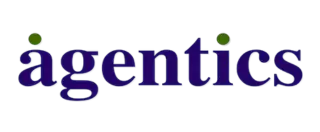
9 Factors Influencing Chatbot Pricing for Businesses
GeneralOverview
The primary factors influencing chatbot pricing for businesses encompass:
- The type of chatbot
- The complexity of use cases
- Integration requirements
- Customization
- Ongoing support costs
Each of these elements significantly impacts pricing. While initial investments may vary, they frequently result in substantial long-term savings and enhanced operational efficiency. This reality underscores the justification for the costs involved, making a compelling case for businesses to consider chatbot solutions as a strategic investment.
Introduction
The rapid evolution of chatbot technology presents businesses with a complex landscape of pricing factors that can significantly impact their bottom line. Understanding the nuances of chatbot pricing is crucial for organisations aiming to harness these AI-driven tools effectively. From the type of chatbot—be it rule-based or AI-powered—to the intricacies of use case complexity and integration requirements, each element plays a pivotal role in shaping overall costs.
How can businesses navigate these variables to ensure they invest wisely in chatbot solutions that not only meet their needs but also deliver long-term value? The time to act is now; leveraging the right chatbot technology can transform your operations and drive sustainable growth.
Agentics: Tailored AI Communication Solutions Impacting Chatbot Pricing
Agentics excels in creating tailored AI communication solutions that significantly influence chatbot pricing for conversational agents. By aligning virtual assistant features with specific organisational goals, Agentics ensures that each solution is customised to address the unique challenges faced by its clients.
While custom solutions may require a higher initial investment, they often yield substantial long-term savings through enhanced operational efficiency and improved customer engagement. For instance, businesses that implement customised conversational agents report an average sales increase of 67%, highlighting the potential for a high return on investment (ROI).
This strategic approach not only addresses immediate needs but also positions companies for sustained growth. It is crucial for organisations to understand how custom functionalities can affect overall effectiveness and chatbot pricing. Additionally, integrating automated dialers can further enhance sales performance by streamlining communication processes and improving efficiency.
Type of Chatbot: Rule-Based vs. AI-Powered Pricing Differences
The type of chatbot is pivotal in shaping chatbot pricing strategies. The development and maintenance of rule-based conversational agents, which rely on predefined scripts and workflows, generally have lower chatbot pricing, ranging from $2,000 to $10,000. Conversely, AI-driven conversational agents, such as those offered by Agentics, leverage advanced machine learning and natural language processing, allowing them to understand and respond to user inquiries in a more dynamic fashion.
Although the initial investment for AI conversational agents can be considerably higher, often surpassing $20,000, chatbot pricing reflects the enhanced user experiences they provide and their ability to handle a wider array of inquiries. These agents also extract answers from your documents, optimising internal processes and boosting customer engagement.
Companies that have embraced AI-driven virtual assistants, like JetSMART, have reported notable improvements in customer service efficiency alongside substantial cost reductions. As emphasised by industry experts, the long-term return on investment for AI chatbots often justifies the initial chatbot pricing, positioning them as a strategic choice for organisations aiming to elevate customer interactions and streamline operations.
Complexity of Use Case: How It Affects Chatbot Development Costs
The intricacy of a use case is pivotal in determining the chatbot pricing associated with its development. Straightforward implementations, such as those addressing frequently asked questions (FAQs) or basic customer support inquiries, typically require limited development time and resources. Consequently, these projects generally incur costs ranging from $3,000 to $15,000. In stark contrast, more complex use cases—such as multi-step transactions or personalised customer interactions—necessitate advanced programming, sophisticated natural language processing (NLP), and extensive integration efforts. This added complexity can significantly elevate development costs, often surpassing $75,000 to $150,000 for advanced AI conversational agents.
At Agentics, we recognise that deploying AI is not a one-size-fits-all solution. Our DARE to Deploy AI™ process commences with a thorough Discovery & Diagnostics phase, where we delve into your specific requirements and use cases. This ensures effective resource allocation. Following this, we conduct an Audit & Agreement phase to formulate a tailored proposal, then progress into Requirements & Readiness to finalise goals and milestones, culminating in the Execution & Evolution phase where we implement the plan.
For instance, a company opting for a straightforward FAQ bot may find a basic solution sufficient, whereas another aiming to automate complex customer journeys should be prepared for a more considerable investment. As Madhulika Kaushal aptly states, “the real challenge lies not in whether to adopt chatbots, but in deploying the right solution that aligns with business needs and budget constraints.” By understanding the nuances of use case complexity, organisations can make informed decisions that enhance their conversational agent capabilities while optimising expenses. Moreover, it is essential to consider recurring costs associated with automated conversation systems, such as maintenance and updates, to gain a comprehensive understanding of the overall ownership expenses.
Integration Requirements: Costs Associated with System Compatibility
Integration requirements can significantly escalate the expenses associated with chatbot projects. Businesses are increasingly pursuing automated conversational agents that seamlessly interact with existing systems, such as CRM platforms, databases, and various software tools. The complexity of these integrations can vary greatly, directly influencing both the time and resources required for development.
For instance, incorporating sophisticated AI conversational agents with current systems can elevate overall project expenses by $50,000 to $150,000. Companies must meticulously consider chatbot pricing when budgeting for automated conversation systems, as a well-integrated solution not only enhances operational efficiency but also elevates user satisfaction.
Statistics reveal that organisations utilising integrated chatbots experience a 30% reduction in operational costs, underscoring the critical importance of compatibility in achieving long-term value. As companies navigate the integration landscape, they should prioritise compatibility to ensure their automated messaging projects deliver the intended results.
Customization and Design: Pricing Implications of Tailored Solutions
Customization and design are pivotal elements that influence chatbot pricing. Businesses are increasingly in search of virtual assistants that not only embody their brand identity but also offer a user-friendly experience. Agentics’ advanced AI chatbots transcend basic functionalities; they possess the capability to understand, learn, and escalate issues, significantly enhancing customer engagement.
While custom designs, featuring unique interfaces and personalised conversation flows, may increase development costs, investing in a well-designed virtual assistant that leverages Agentics’ DARE to Deploy AI™ process, along with effective chatbot pricing, can result in elevated user engagement and satisfaction, thereby justifying the additional expenditure.
Companies must carefully evaluate the advantages of customization against their budget limitations, acknowledging how chatbot pricing for a tailored solution can streamline internal operations and enhance overall communication.
Support and Maintenance: Ongoing Costs in Chatbot Ownership
Support and maintenance are vital yet frequently undervalued elements of virtual assistant ownership, leading to considerable ongoing expenses. Businesses must prioritise regular updates and maintenance to ensure their chatbots operate effectively, which can influence chatbot pricing. This includes essential costs related to software updates, troubleshooting, and user support.
Research indicates that nearly 70% of clients assess service quality based on response speed, underscoring the necessity for effective automated assistant performance. Regular updates are crucial for maintaining chatbot effectiveness; without them, outdated chatbot pricing systems can significantly hinder user experience and satisfaction.
Companies should proactively budget for chatbot pricing and these ongoing expenses, ensuring their virtual assistants continue to deliver value over time, ultimately enhancing customer engagement and operational efficiency.
Agentics’ DARE to Deploy AI™ process highlights the importance of ongoing support during the Execution & Evolution phase, ensuring that AI systems, including chatbots, are continuously refined and improved.
For instance, H&M employs a customer service virtual assistant that necessitates regular updates to provide personalised shopping recommendations, while Bank of America’s assistant, Erica, effectively helps customers manage their finances.
By acknowledging and preparing for these maintenance requirements, organisations can enhance their investments in automated systems and improve overall service quality.
Development Approach: In-House vs. Agency Pricing Models
The choice of development method plays a crucial role in determining chatbot pricing for conversational agents. While in-house development may seem cost-effective at first glance, it often requires hiring specialised talent and investing in extensive training, leading to increased costs. On the other hand, partnering with an agency such as Agentics provides access to seasoned expertise and resources, significantly streamlining the development process.
Although agency fees can be higher upfront—typically ranging from $1,000 to $5,000 per month—the potential for a more refined and effective solution often justifies this investment in chatbot pricing. Businesses that have collaborated with agencies report substantial efficiency gains; for instance, organisations utilising agency-developed chatbots are 2.1 times more likely to achieve exceptional results.
This is particularly relevant as assistant bots are recognised for enhancing operational efficiency and driving sales through automation and improved communication. Moreover, a well-defined project scope can reduce development costs by up to 30%, as highlighted by Blocktunix, making agency partnerships not only a strategic choice but also a financially prudent one.
Pricing Models: Subscription, Pay-As-You-Go, or One-Time Fees
The landscape of chatbot pricing models is diverse, requiring businesses to choose one that aligns with their financial strategies and operational needs. The primary chatbot pricing models include:
- Subscription-based pricing, where companies pay a recurring fee for access to the chatbot.
- Pay-as-you-go models that charge based on actual usage.
Subscription plans typically range from $15 to $1,000 each month, providing consistent expenses and regular updates, though they may limit customization options. Conversely, pay-as-you-go models offer flexibility, charging between $0.006 and $1 per interaction, with Google DialogFlow charging $0.007 per request for text-based inputs, making them particularly suitable for businesses with fluctuating demand.
One-time charges for direct acquisitions are also an option, although they often involve higher initial costs, generally between $10,000 and $30,000 for basic AI chatbots, and exceeding $100,000 for more sophisticated solutions. Additionally, integration expenses can average between $19.99 and $599 monthly, which should be factored into the overall budget. Each model has its advantages and disadvantages, and companies must consider their budget, anticipated usage, and long-term objectives when selecting a chatbot pricing structure.
For instance, companies anticipating high interaction volumes may find a pay-as-you-go model beneficial, while those seeking stability and regular updates might prefer a subscription plan. Financial analysts advocate for evaluating the total cost of ownership, including ongoing maintenance costs that can range from $10,000 to $100,000 annually, to ascertain the most cost-effective approach. Ultimately, the appropriate chatbot pricing model should align with the specific requirements and goals of the business, ensuring that the investment in conversational agent technology yields optimal returns.
Industry-Specific Requirements: How They Shape Chatbot Pricing
Industry-specific requirements profoundly influence the chatbot pricing of automated conversation systems. In the healthcare sector, for instance, stringent regulations often necessitate additional features, such as advanced security measures and compliance tracking. This can lead to increased costs for automated response systems. Compliance expenses in regulated sectors can be substantial; firms may allocate up to 20% of their revenues to regulatory adherence, directly impacting their budget for technological solutions like virtual assistants, as highlighted by the Congressional Budget Office regarding pharmaceutical companies’ investments in R&D.
Furthermore, industries characterised by high customer interaction, such as retail, typically demand more sophisticated functionalities to enhance user experience. While these advanced features are beneficial, they can also increase the overall chatbot pricing for implementation. The FDA’s ‘pre-cert’ programme for digital health products exemplifies how healthcare companies have effectively integrated compliant virtual assistants that not only streamline patient interactions but also ensure regulatory adherence, underscoring the value of investing in customised solutions.
As businesses assess their industry needs, it is imperative to allocate an adequate budget for essential features, compliance requirements, and chatbot pricing. Understanding the specific regulatory landscape, including ongoing maintenance and updates for conversational agents, enables organisations to make informed decisions regarding their investments in these technologies, ensuring they meet both operational and compliance standards effectively.
Hidden Costs: Identifying Additional Expenses in Chatbot Implementation
Concealed expenses can significantly impact the overall budget for chatbot pricing, often leading to unexpected financial strain. Among the common hidden costs are the expenses associated with training staff to utilise the chatbot effectively, which can vary greatly depending on the system’s complexity. Additionally, businesses may incur costs for supplementary software or hardware essential for seamless integration, along with ongoing support or update fees, which can include chatbot pricing that accumulates over time.
At Agentics, we understand that deploying AI, including chatbots, necessitates a strategic approach. Our DARE to Deploy AI™ process begins with a thorough Discovery & Diagnostics phase, where we help identify potential concealed expenses at the outset. A survey revealed that 70% of executives recognised generative AI as a significant factor contributing to rising computing costs, underscoring the importance of meticulous financial planning during implementation. Companies like TechStyle have reported remarkable savings of $1.1 million in operational expenses within their first year; however, they also faced unanticipated costs during the integration of automated assistants, highlighting the critical need for comprehensive research and planning.
Moreover, organisations often overlook expenses related to compliance and maintenance, which can accumulate significantly. For instance, HIPAA-compliant automated response solutions start at $50,000, illustrating how adherence can affect budgeting. By utilising our Audit & Agreement phase, businesses can develop a comprehensive budget that considers these potential hidden costs, ensuring preparedness for all facets of chatbot ownership, including chatbot pricing. This phase enables us to outline processes and pinpoint all necessary expenditures, assisting companies in managing their financial resources effectively and preventing disruptions in their operational strategies.
Conclusion
Understanding the factors influencing chatbot pricing is essential for businesses aiming to invest in automated communication solutions. Various elements, such as the type of chatbot, complexity of use cases, integration requirements, and industry-specific demands, significantly impact costs. Customization and design are also crucial factors that enhance user engagement but may necessitate a higher initial investment.
Key insights reveal the distinction between rule-based and AI-powered chatbots. The latter, despite higher upfront costs, often delivers superior performance and ROI. Moreover, the importance of ongoing support and maintenance cannot be overstated; these elements ensure long-term effectiveness and user satisfaction. Businesses must remain vigilant about hidden costs that may arise during implementation and operation, affecting overall budget planning.
Ultimately, adopting a strategic approach to chatbot pricing—carefully evaluating development methods and pricing models—is vital for achieving optimal returns on investment. By thoroughly understanding these factors and aligning chatbot solutions with specific business needs, organisations can enhance customer interactions and streamline operations. This strategic alignment paves the way for sustained growth and success in an increasingly digital landscape.
Frequently Asked Questions
What is Agentics and what do they specialise in?
Agentics specialises in creating tailored AI communication solutions that significantly impact chatbot pricing for conversational agents. They customise virtual assistant features to align with specific organisational goals and address unique client challenges.
How does the initial investment in custom chatbot solutions compare to long-term savings?
While custom solutions may require a higher initial investment, they often lead to substantial long-term savings through enhanced operational efficiency and improved customer engagement, with businesses reporting an average sales increase of 67%.
What is the pricing range for rule-based chatbots?
The pricing for rule-based conversational agents typically ranges from $2,000 to $10,000, as they rely on predefined scripts and workflows, which require less development and maintenance.
How does the pricing for AI-powered chatbots differ from rule-based ones?
AI-driven conversational agents often have a higher initial investment, typically exceeding $20,000, due to their advanced machine learning and natural language processing capabilities, which allow for more dynamic user interactions.
What factors influence the development costs of chatbots?
The complexity of the use case significantly affects chatbot development costs. Simple implementations may cost between $3,000 to $15,000, while complex use cases can exceed $75,000 to $150,000.
What is the DARE to Deploy AI™ process at Agentics?
The DARE to Deploy AI™ process includes several phases: Discovery & Diagnostics to assess specific requirements, Audit & Agreement to formulate a proposal, Requirements & Readiness to finalise goals, and Execution & Evolution for implementation.
What should organisations consider regarding recurring costs for chatbot solutions?
Organisations should consider recurring costs such as maintenance and updates when evaluating the overall ownership expenses of automated conversation systems.
Enjoyed this post? Share it with your network!
10 Best AI Sales Tools to Boost Your Team’s Performance

Discover the top 10 best AI sales tools to enhance team performance and drive revenue growth.
Mastering Test Call Numbers: A Step-by-Step Guide for Sales Directors

Elevate your communication with our guide on mastering test call numbers for sales success.
7 Ways Automated Outbound Calls Boost Sales Performance

Discover how automated outbound calls enhance sales performance and streamline communication.
